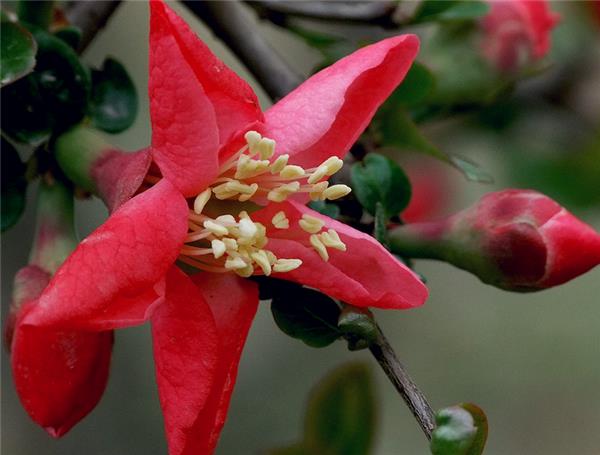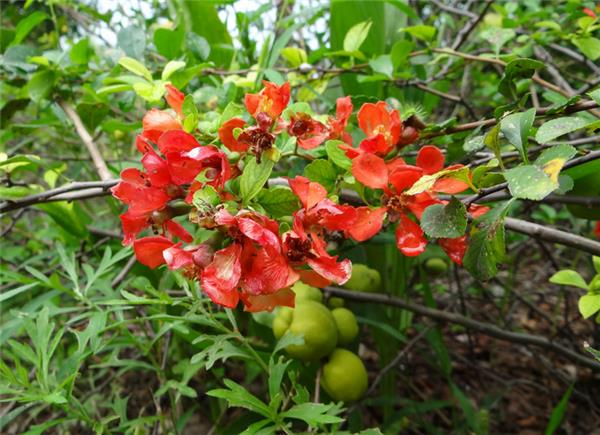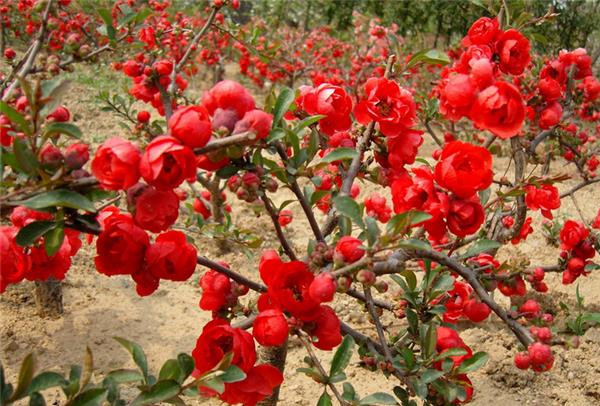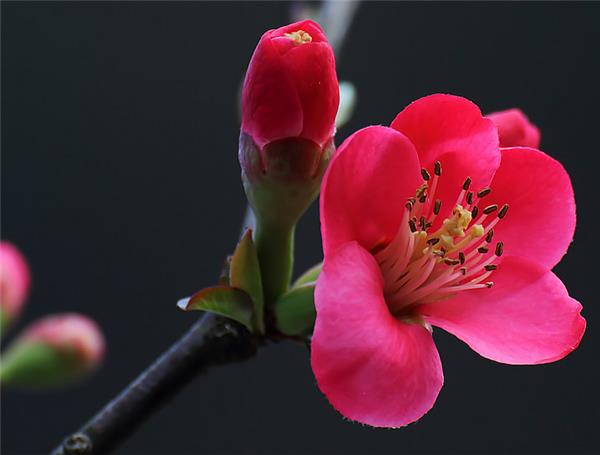How to grow papaya crabapple
Papaya begonia belongs to deciduous shrubs or small trees, flowering period in March-May, now potted papaya begonia garden is also very popular, the following for everyone to introduce papaya begonia planting methods.

How to grow papaya crabapple
The propagation of Chinese flowering crabapple can be used by sowing, dividing, inserting, layering and other methods. For some excellent varieties, grafting can also be used to propagate.
sowing
It is mostly used for varieties such as papaya begonia with high fruit setting rate. After the late autumn fruit matures, peel off the seed coat, remove the pulp, take out the seeds, store them in sand, sow them in March of the next year, soak them in warm water before sowing to promote seed germination. The seedbed can be mixed with decomposed sawdust 2 parts and yellow sand soil 3 parts. After sowing, cover soil 2 cm, cover plastic film, keep soil moist later, about 40 days after seedling emergence, remove plastic film after seedling emergence, apply decomposed thin liquid fertilizer when seedling height is 10 cm. Don't divide seedlings in that year, and plant them in February and March of the second year. When the seedlings are 30 cm high, they will head and stem to promote multiple new branches. They can bloom after 2 to 3 years.
Ramet
It is usually used on clustered plants, usually in late autumn or early spring, by digging up the clustered mother plants from the soil and dividing them, each with 2 to 3 branches. It is also easy to dig out the evil branches next to the old plants and plant them. The ramets in late autumn should be planted in order to promote wound healing and planted in the following spring. Early spring ramets can be planted directly.

insert
It is divided into two kinds: hard branch cutting and young branch cutting. No matter what kind of branch cutting is used, ABT rooting powder can be used to treat the cuttings in order to promote rooting. The method is to prepare ABT rooting powder into solution according to the proportion of instructions, soak the base of cuttings for 8 to 12 hours, and then cut. In addition, root penetration can be performed. Good drainage sand or vermiculite is suitable for the medium of interplanting.
Root cutting method is combined with plant cutting robust thick roots, flat in the soil, soil cover, soon there will be seedlings grow out.
bead
Often used for creeping growth of Begonia, mostly in the spring, the method is to grow strong branches after the ring cut pressure into the soil, 50 to 60 natural roots, autumn or spring of the following year and mother plant separation, separate planting.

Culture method of Chinese flowering crabapple
1. Planting. Generally planted in the ground, can also be potted production bonsai, spring planting, because avoid water damage, should be planted in a slightly higher terrain is not easy to accumulate water, sunny place. The soil is neutral and slightly alkaline, with pH not lower than 7. Quality requirements loose, but not too fertile, too fertile easy to cause excessive growth, flowering reduced. The planting hole should be determined according to the size of the root system, not too deep and too large, and it is better to spread the root system. The planting depth should be 10 centimetres from the ground. It is best to plant with soil. Water well after planting.
2. Light and temperature. Begonia is suitable to grow in an environment with sufficient light, but it grows poorly in a shady environment. If potted, place in a well-lit place during growing season. In winter, it will not be frozen under the low temperature condition of-15℃, and it can overwinter outdoors. However, in the unusually cold winter, it is necessary to take cold-proof measures.

3. Watering and fertilizing. Watering is combined with fertilization. Every autumn after defoliation to apply a large fertilizer, supplement the nutrients consumed by flowers and fruits, to apply decomposed organic fertilizer is good. At the same time combined with winter irrigation watering. Apply organic fertilizer once and irrigate permeable water once before spring bud shade. Fertilization methods in autumn and winter vary according to age. Young trees are fertilized in a ring shape, with a ring distance of less than 100 cm from the root of the tree; older trees are fertilized in a radial shape; old trees are combined with weeds, organic fertilizer is scattered under the crown, and the fertilizer is turned into 30 cm underground after application. After flowering, phosphorus and potassium fertilizer are applied twice to ensure a certain fruit setting rate. Pay attention to watering.
4. Plastic trim. Begonia flower bud differentiation by the terminal bud, and to medium and short fruit branches as the main flower, so to retain medium and short fruit branches. Long branches should be cut short, and over-dense branches, dry branches, diseased branches should also be cut off, and then pruned according to the desired tree shape. If you want to make the crown perfect, you should keep it thin and thin, cut off the dense branches, and cut down the sparse parts of the branches, so as to make it more lateral branches and simple vacancies.
Related
- Wuhan Hospital Iron Tree Blooming Result Was Instantly Frightened by the Gardener Master
- Which variety of camellia is the most fragrant and best? Which one do you like best?
- What is the small blue coat, the breeding methods and matters needing attention of the succulent plant
- Dormancy time and maintenance management of succulent plants during dormancy
- Minas succulent how to raise, Minas succulent plant pictures
- What are the varieties of winter succulent plants
- How to raise succulent plants in twelve rolls? let's take a look at some experience of breeding twelve rolls.
- Attention should be paid to water control for succulent plants during dormant period (winter and summer)
- Watering experience of twelve rolls of succulent plants
- Techniques for fertilizing succulent plants. An article will let you know how to fertilize succulent plants.



